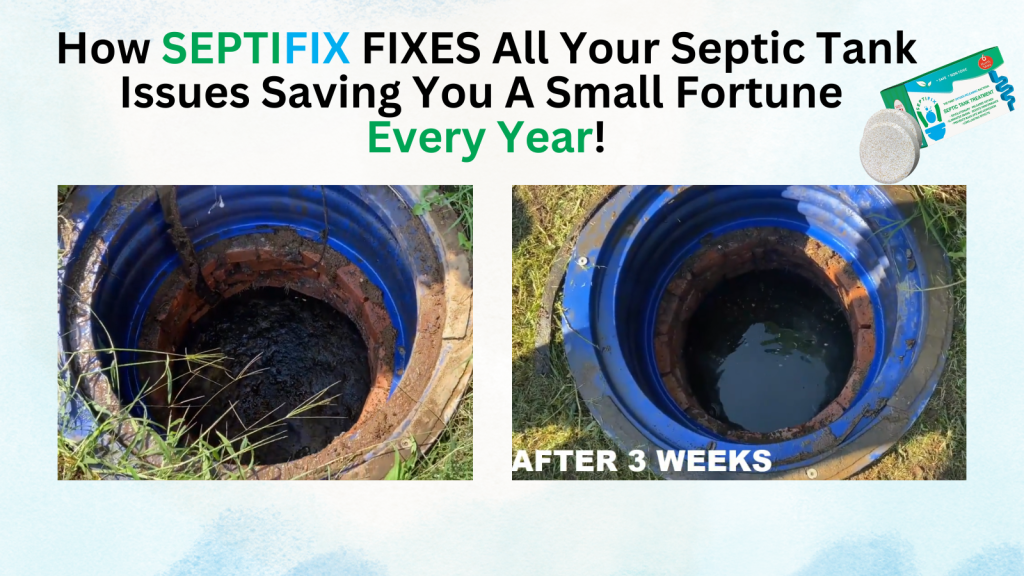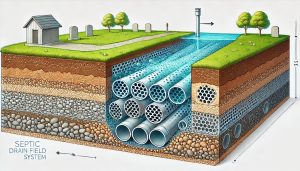A properly installed septic system is crucial for managing household wastewater, especially in rural areas. Many homeowners wonder, can I install my own septic system in PA? While DIY installation may seem like a cost-saving option, Pennsylvania has strict laws and regulations governing septic system installation. Understanding these requirements can help you avoid costly fines and ensure your system functions efficiently.
Table of Content
- Understanding Pennsylvania’s Septic System Regulations
- DIY Septic System Installation: What’s Allowed?
- Steps to Install a Septic System in Pennsylvania
- Cost Breakdown: DIY vs. Professional Installation
- Inspections and Final Approval
- Common Mistakes in DIY Septic Installation
- Septic Permit Links by State
- Septic Permit Forms By State
Understanding Pennsylvania’s Septic System Regulations
In Pennsylvania, septic system regulations fall under the Department of Environmental Protection (DEP) and local authorities. The Sewage Facilities Act (Act 537) mandates that all septic systems meet environmental and health standards. Key requirements include:
- Obtaining a permit before installation.
- Conducting a soil percolation test to determine drainage capability.
- Meeting system design standards based on property size and soil conditions.
- Following installation inspections by a local Sewage Enforcement Officer (SEO).
Failing to comply with these regulations can result in hefty fines and system failure, leading to groundwater contamination.
DIY Septic System Installation: What’s Allowed?
In Pennsylvania, homeowners can install their own septic system, but strict conditions apply:
- You must secure a septic permit from your local municipality.
- A certified SEO must approve the site and soil tests.
- Your installation must meet state and local construction standards.
- The completed system must pass an inspection before use.
Although DIY installation is possible, Pennsylvania’s strict regulations make professional installation the preferred choice for most homeowners.
Steps to Install a Septic System in Pennsylvania
1. Site Evaluation & Permitting
Before installing a septic system, you must request a site evaluation by a local SEO. This includes:
- A percolation (perc) test to assess soil drainage.
- Evaluation of the property’s slope and water table.
- Determining system type based on soil absorption rates.
- Submitting plans for permit approval.
Without passing these evaluations, a septic permit will not be issued.
2. Choosing the Right Septic System
Several septic systems are available, and the best choice depends on your property’s soil conditions:
- Conventional septic tanks with drain fields.
- Mound systems for properties with poor soil absorption.
- Aerobic treatment units (ATUs) for high water table areas.
- Drip irrigation systems for properties with limited space.
Your local SEO can help determine which system is suitable for your property.
3. Excavation and Installation Process
Once you have a permit, the installation process includes:
- Excavation – Digging the area for the septic tank and drain field.
- Tank Installation – Placing the septic tank at the correct depth.
- Drain Field Setup – Laying perforated pipes in a gravel or sand-filled trench.
- Connection and Testing – Ensuring all pipes connect properly and conducting an initial system test.
- Final Inspection – The SEO must inspect and approve the installation before the system can be used.
Cost Breakdown: DIY vs. Professional Installation
DIY Septic System Costs
A DIY septic system installation can save money on labor, but it still requires a significant investment:
- Soil Testing & Permits: $500 – $1,500
- Septic Tank: $1,000 – $3,000
- Drain Field Materials: $2,000 – $5,000
- Excavation Equipment Rental: $1,000 – $3,000
- Inspection & Approval Fees: $300 – $1,000
Total DIY Cost: $4,800 – $13,500
Professional Installation Costs
Hiring a licensed septic installer may cost more but ensures compliance:
- Installation & Labor: $4,000 – $10,000
- Total Cost (Including Materials & Permits): $10,000 – $25,000
Though a DIY installation seems cost-effective, errors in design or installation can lead to expensive repairs or complete system failure.
Inspections and Final Approval
Pennsylvania law requires a final inspection before the septic system is approved for use. The local SEO will check:
- Proper system placement and depth.
- Correct drain field installation.
- Compliance with environmental regulations.
If your system fails inspection, you may need costly modifications or risk penalties for non-compliance.
Common Mistakes in DIY Septic Installation
Installing a septic system yourself comes with risks, including:
- Poor site selection leading to slow drainage or flooding.
- Improper tank sizing that causes backups.
- Incorrect drain field design that results in system failure.
- Ignoring setback requirements, leading to legal issues.
To avoid these problems, consult an SEO or hire a professional for complex installations.
Conclusion
So, can you install your own septic system in PA? Yes, but it’s a challenging process that requires permits, inspections, and strict adherence to regulations. Mistakes can lead to costly repairs and fines. If you’re not confident in handling the process, hiring a professional ensures compliance and long-term efficiency.
Septic Regulations in Rural Areas: Essential Guide for Rural Property Owners
The Role of Perforated Pipes in Drain Fields
What Happens During a Pumping Service?
Septic Tanks vs. Sewer Systems | Choosing the Right Option
Directory | Virginia Septic Service Providers | Part 2
Directory | Virginia Septic Service Providers : Best Professionals | Part 1
Septic Treatments for Odor Control: Best Methods for Eliminating Unpleasant Smells
How to Maintain a Healthy Bacteria Balance | Tips to Ensure Your Septic System Has the Right Microbial Environment

Septic Permit Links by State









